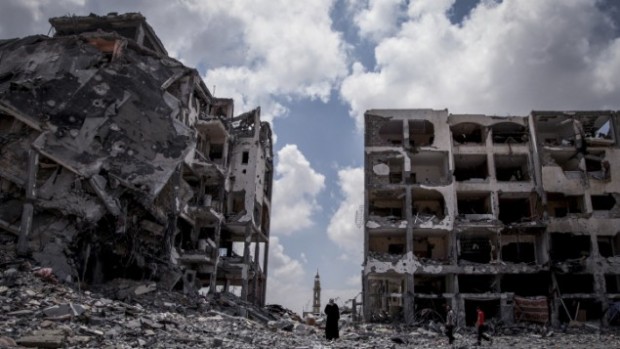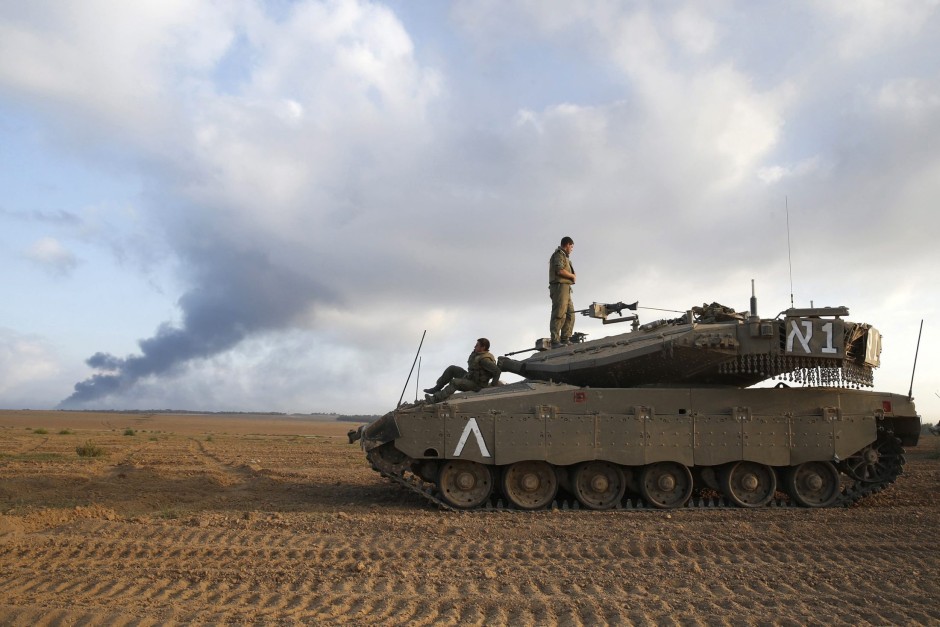The guns have finally fallen silent in the Gaza Strip.
After a 29-day war, the fourth pitting Israel against Hamas in eight years, Israel has unilaterally withdrawn from Gaza and repositioned its army along the border in case of a flareup. Both sides are observing a 72-hour truce and have sent delegations to Cairo in pursuit of a more durable ceasefire.

In the end, Hamas accepted an Egyptian ceasefire proposal that Israel had originally embraced and that it had vehemently rejected two weeks ago. It’s also worth noting that Mohammed Deif, the head of Hamas’ military wing, had said he would not submit to a cessation of hostilities unless Israel’s naval blockade of Gaza was lifted. Israel did not lift the siege, forcing Hamas to back down.
Like the wars of 2006, 2009 and 2012, this one ended in stalemate as well and may yet set the stage for another round of fighting in the future. Israel and Hamas each claimed victory, but in reality, there was no undisputed victor, validating the maxim that a military solution in unattainable.
The Israeli armed forces hit approximately 4,700 targets, destroyed 3,000 rockets on the ground, intercepted nearly 600 rockets in flight, blew up 32 attack tunnels and killed upwards of 900 Palestinian fighters, including several senior commanders. “We struck a very severe blow to Hamas and other terrorist organizations,” said Israeli Prime Minister Benjamin Netanyahu.
Hamas and its ally, Islamic Jihad, fired about 3,400 rockets into Israel and killed 64 soldiers and three civilians.

While it is true that Israel pounded the Palestinians relentlessly, setting them back by five years according to Israeli Defence Minister Moshe Yaalon, Israel did not even come close to destroying Hamas and Islamic Jihad. The vast majority of their fighters survived. Their leaders will eventually emerge from their reinforced bunkers. Their military infrastructure remains basically intact. And some of their attack tunnels remain in place, as Moussa Abu Marzook, Hamas’ representative in Egypt, boasted the other day.
It would have taken an Israeli reoccupation of Gaza, resulting in fearsome casualties, to have toppled Hamas. Several Israeli cabinet ministers, notably Foreign Minister Avigdor Liberman and Economy Minister Naftali Bennett, had urged Netanyahu to go all the way, but neither he nor the chief of staff, Gen. Benny Gantz, seriously considered that option.
Though battered by Israel, Hamas managed to rattle Israel’s sense of security. Hamas’ improved rockets, manufactured in Gaza with Iran’s technical assistance, regularly reached major cities like Tel Aviv, Haifa, Jerusalem, Beersheba. The Iron Dome anti-missile system, developed in cooperation with the United States, shot down more than 580 such projectiles, their metal fragments landing harmlessly in most cases. But no one failed to take notice of the fact that Hamas had made a quantum leap in its firepower.
Hamas, too, disrupted the daily rhythms of life in Israel.
When a rocket landed close to Ben-Gurion Airport, Israel’s gateway to the world, one airline after another suspended flights to Israel for two days, handing Hamas a great victory. One wonders what might have happened had a rocket hit an incoming plane, an airplane sitting on the tarmac or the terminal itself.
The war forced Israelis into bomb shelters, led to an exodus of Israelis living in border communities, virtually obliterated Israel’s tourist industry, closed beaches and prompted the cancellation of concerts and a tennis tournament. By one estimate, the Israeli economy took a $1 billion to $2 billion hit.

Gaza’s economy/infrastructure fared even worse, having sustained $6 billion worth of damage. But the Palestinians need not worry. Wealthy Arab countries, like Qatar, will funnel funds into Gaza for reconstruction, which will generate thousands of jobs.
Widely accused of using disproportionate force, Israel was condemned by friend and foe alike as 1,800 Palestinians were killed during the course of the fighting in densely-populated Gaza. By various means, Israel tried to avoid hitting civilians, in whose midst Hamas intentionally embedded itself.
With deliberate calculation, Hamas adopted a strategy of using civilians as human shields so as to bring international opprobrium and isolation on Israel. To an extent, this cruel but clever strategy of creating “martyrs” in the cause of Palestinian rejectionism worked. Hezbollah, Hamas’ big brother, devised this strategy during the Second Lebanon War in 2006, and Hamas emulated it eagerly.
The mounting death toll in Gaza unleashed the age-old demon of antisemitism among a minority of pro-Palestinian demonstrators, particularly in Europe. Observing this resurgence of racial hatred, British Foreign Secretary Philip Hammond warned that “an upturn in antisemitic rhetoric” was a distinct possibility.
In all probability, the war has hardened public opinion in Israel. Hamas aggression, having united the normally politically fractured Jewish population, may have dire consequences on attempts to resurrect peace talks with the Palestinian Authority. Netanyahu and a few of his ministers have already cited the war as a prime reason for retaining the West Bank rather than relinquishing it to the Palestinians within the framework of an agreement.
Israel, rightly so, is demanding the demilitarization of Gaza, the disarming of Hamas and the replacement of Hamas’ leadership. Israel does not want to return to the status quo ante, nor does it wish to send its army to Gaza to fight Hamas again in a few years.
If real change is to come to the region, the Palestinian Authority will have to reassert its authority in Gaza, from which it was ousted in 2007. Now that the Palestinian Authority and Hamas have formed a unity government, one that Israel opposed, there may be an opportunity to create new facts on the ground in Gaza.
It’s difficult to believe that Hamas will voluntarily disband its military wing and concur with demilitarization. But if enough political and military pressure is brought to bear on Hamas by the Palestinian Authority and Egypt, whose leadership hates Hamas, it might be possible to pacify Gaza and turn it into a thriving concern for its 1.7 million inhabitants.
Of course, Israel would have to pay a substantial political price for defanging Hamas. In short, Israel would be called upon to resume peace with the Palestinian Authority, negotiate in good faith and agree to a two-state solution that guarantees its security and gives the Palestinians statehood in the West Bank and Gaza.
Failing that, Israelis and Palestinians will be at each other’s throats in a few years from now, if not sooner.
